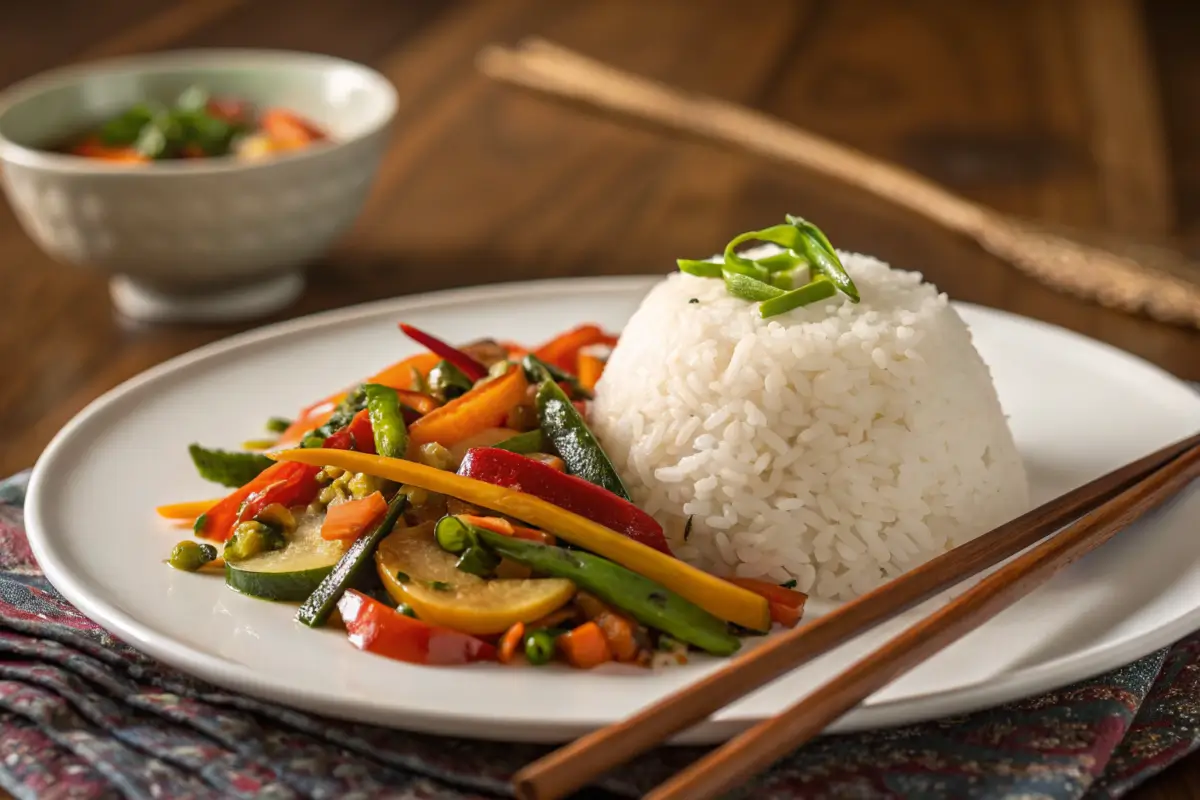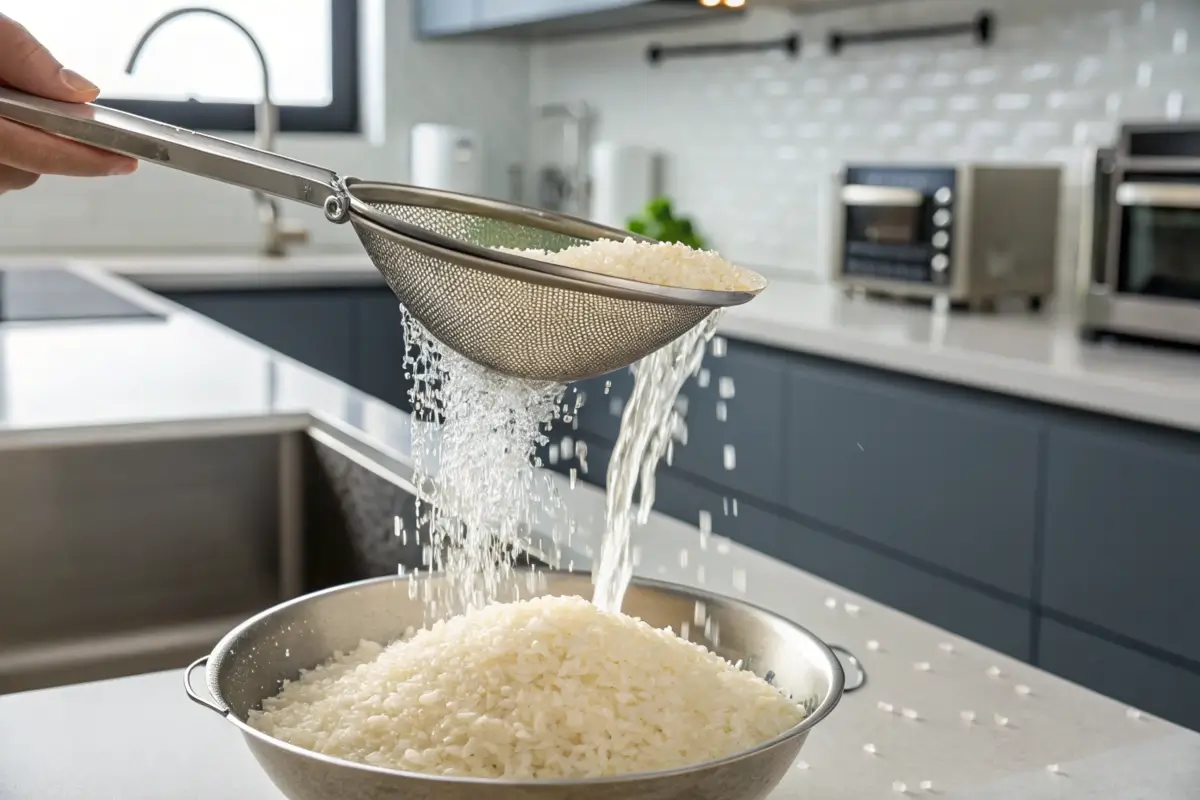Cooking perfect jasmine rice might seem straightforward, but getting the right ratio of water to rice is the key to mastering this culinary staple. Whether you’re preparing a cozy family meal or experimenting with exotic recipes, understanding this ratio is essential. This article breaks down everything you need to know about cooking jasmine rice in a rice cooker, including the ideal water-to-rice ratio, step-by-step instructions, and tips to make your rice turn out fluffy every time. By the end, you’ll be a pro at cooking jasmine rice that complements any dish.
Understanding Jasmine Rice and Its Cooking Requirements
What is Jasmine Rice?
Jasmine rice is a fragrant, long-grain rice native to Thailand. Known for its subtle floral aroma and slightly sticky texture, it’s a staple in Southeast Asian cuisine. Unlike plain white rice, jasmine rice has a delicate, nutty flavor that pairs beautifully with curries, stir-fries, and grilled meats.
This versatile rice stands out because of its soft, slightly sticky grains that retain their structure while remaining light and fluffy. The unique texture and aroma make it a favorite for households and professional chefs alike. However, cooking it requires a bit more care than other types of rice, particularly in getting the water-to-rice ratio just right.
Importance of the Water-to-Rice Ratio
The water-to-rice ratio is the single most critical factor in cooking jasmine rice. Too much water can turn your rice into a soggy mess, while too little water leaves it undercooked and crunchy. For jasmine rice, the perfect balance ensures that the grains are fluffy and separate, without being too wet or too dry.
Most recipes recommend a ratio of 1 part rice to 1.5 parts water, but this can vary depending on how soft or firm you prefer your rice. Rinsing the rice before cooking can also slightly alter the ratio, as it removes excess starch that might otherwise affect the texture.
Failing to get the ratio right can lead to common rice-cooking woes like gummy clumps, unevenly cooked grains, or rice that sticks stubbornly to the bottom of the pot. But don’t worry! In the next sections, we’ll explore how to perfect this ratio and adapt it to your rice cooker.
The Ideal Jasmine Rice-to-Water Ratio
Standard Water-to-Rice Ratio for Jasmine Rice
The golden rule for cooking jasmine rice in a rice cooker is the 1:1.5 ratio. That means for every one cup of jasmine rice, you should use one and a half cups of water. This ratio ensures the grains cook evenly and maintain their light, fluffy texture without becoming too mushy.
If you prefer firmer rice, consider using a 1:1.25 ratio instead. For softer rice, you can increase the water slightly to 1:1.75. However, these variations depend on your personal taste and the specific type of rice cooker you’re using.
Additionally, rinsing the rice before cooking can affect the final result. Rinsing removes excess starch, which can otherwise cause the rice to clump together. When using the keyword What is the ratio of jasmine rice to water in a rice cooker?, always remember to consider these factors to achieve perfect consistency.
Factors Influencing the Ratio
Several elements can tweak the ideal ratio for jasmine rice:
- Type of Rice Cooker
Advanced models with fuzzy logic or pressure settings may require slightly less water. Check your appliance’s user guide for manufacturer recommendations. - Rinsing and Soaking
Washed rice absorbs some water during rinsing, which can slightly lower the amount needed during cooking. - Desired Texture
Personal preference plays a significant role. Some enjoy their rice soft and sticky, while others prefer firm, separate grains. - Environmental Conditions
Higher altitudes might necessitate more water due to slower boiling temperatures.
Experimentation is key. Take notes on adjustments until you find the perfect ratio for your needs.
How to Cook Jasmine Rice in a Rice Cooker
Step-by-Step Cooking Instructions
Cooking jasmine rice in a rice cooker is straightforward:
- Measure the Rice and Water
Start with the recommended 1:1.5 ratio. For two cups of rice, use three cups of water. - Rinse the Rice
Place the rice in a bowl and rinse it under cold water until the water runs clear. This step removes excess starch and helps achieve fluffy rice. - Add Rice and Water to the Cooker
Transfer the rinsed rice into the rice cooker and add the correct amount of water. - Start the Cooker
Select the appropriate setting for white rice and press start. Most cookers handle jasmine rice well on the standard setting. - Let it Rest
Once the cooking cycle ends, let the rice sit for 5–10 minutes before fluffing with a fork.

Troubleshooting Common Issues
- Mushy Rice
If your rice comes out mushy, you’ve likely added too much water. Next time, reduce the water slightly. - Undercooked Rice
Undercooked grains often result from too little water. Add a tablespoon of water and restart the cooking cycle briefly. - Sticky or Clumpy Rice
Excess starch is usually the culprit. Ensure you rinse the rice thoroughly before cooking.
If you’re new to rice cookers, you might find this guide to cooking jasmine rice in an Instant Pot helpful for alternate methods. By mastering the question, What is the ratio of jasmine rice to water in a rice cooker?, you’ll achieve consistently delicious results every time.
Comparisons with Other Rice Varieties
How Jasmine Rice Differs from Other Types
Jasmine rice stands out among other rice varieties due to its distinct fragrance, texture, and cooking requirements. While many types of rice require similar preparation, jasmine rice’s light, fluffy grains set it apart.
- Basmati Rice: Jasmine rice and basmati rice are both aromatic, but basmati is longer and has a firmer texture. The water-to-rice ratio for basmati is often 1:2, whereas jasmine rice cooks perfectly with a 1:1.5 ratio.
- Sushi Rice: Unlike jasmine rice, sushi rice is short-grain and sticky. It requires a 1:1 ratio and is often seasoned with rice vinegar.
- Brown Rice: Brown jasmine rice retains its bran layer, making it chewier and more nutritious. This variety typically needs a 1:2 ratio and longer cooking time.
Understanding these differences can help you make the right choice for your meal. If you’re interested in trying recipes with other rice varieties, you might enjoy learning about red rice recipes, which offer unique flavors and health benefits.
Unique Ratio Requirements for Different Rices
The ratio of water to rice varies based on grain type and cooking method. For example:
- Long-Grain Rice: Typically, 1:2 works well.
- Medium-Grain Rice: Often needs a bit less water, about 1:1.75.
- Short-Grain Rice: A 1:1 ratio is usually enough.
While jasmine rice requires its own careful ratio, understanding these distinctions makes experimenting with other varieties easier.
Advanced Tips for Perfect Jasmine Rice
Enhancing Flavors
Cooking jasmine rice doesn’t have to be plain. You can easily elevate the flavor by replacing water with broth or adding seasonings. Here are some ideas:
- Coconut Milk: Swap half the water for coconut milk for a creamy, tropical twist.
- Spices: Add a pinch of turmeric or cardamom to infuse subtle warmth and aroma.
- Herbs: Toss in fresh cilantro or parsley after cooking for a fresh finish.
For meals that highlight jasmine rice, pair it with rich, saucy dishes like curries or stir-fries. Need some inspiration? Explore flavor-packed recipes that complement fluffy rice.
Optimizing the Cooking Process
Small tweaks can make a big difference in your jasmine rice:
- Soaking: Letting the rice soak for 20–30 minutes before cooking can improve its texture.
- Using a Damp Cloth: Cover the rice cooker bowl with a damp cloth before closing the lid. This trick locks in steam, resulting in softer rice.
- Fluffing: Always fluff the rice gently with a fork after it rests. This separates the grains and prevents clumping.
By following these tips, you’ll never have to wonder, What is the ratio of jasmine rice to water in a rice cooker? again. Perfectly cooked jasmine rice will become a staple on your dinner table, enhancing every meal it accompanies.
FAQs About Cooking Jasmine Rice
What is the Best Ratio for Jasmine Rice in a Rice Cooker?
The ideal ratio for cooking jasmine rice in a rice cooker is 1 cup of rice to 1.5 cups of water. This ensures the rice turns out light, fluffy, and perfectly cooked. However, adjustments may be necessary based on your preference for softer or firmer rice. For slightly firmer rice, try reducing the water to a 1:1.25 ratio.
Can I Use the Same Ratio for Brown Jasmine Rice?
Brown jasmine rice requires a higher water-to-rice ratio due to its bran layer. A 1:2 ratio works best, with longer cooking times to soften the grains. Unlike white jasmine rice, brown varieties have a chewier texture and nuttier flavor, which pairs well with hearty dishes.
How Much Water Should I Use for 2 Cups of Jasmine Rice?
For two cups of jasmine rice, you’ll need three cups of water if you’re sticking to the standard 1:1.5 ratio. This ensures enough moisture for even cooking without leaving the rice too wet or underdone.
What Happens if I Don’t Rinse Jasmine Rice?
Skipping the rinsing step might make your jasmine rice sticky or clumpy. Rinsing removes excess starch, which otherwise causes the grains to stick together. For best results, rinse the rice under cold water until the water runs clear before cooking.
Conclusion and Summary Tips
Key Takeaways for Perfect Jasmine Rice
Cooking jasmine rice to perfection is simpler than you might think, especially once you master the right water-to-rice ratio. Typically, the ideal ratio is 1 cup of jasmine rice to 1.5 cups of water, though slight adjustments can help achieve your desired texture. For firmer grains, reduce the water to 1.25 cups; for softer, stickier rice, increase it to 1.75 cups. By nailing this balance, you’ll consistently achieve light, fluffy results.
Why Rinsing Matters
One of the most crucial steps in preparing jasmine rice is rinsing. Skipping this step can lead to sticky or clumpy rice, as excess starch on the grains reacts during cooking. Rinsing the rice under cold water until the water runs clear not only improves the texture but also enhances the overall cooking experience. This is particularly important if you’ve ever wondered, What is the ratio of jasmine rice to water in a rice cooker? Rinsed rice absorbs water more evenly, complementing the ratio for better results.

Enhancing Your Rice’s Flavor
Jasmine rice is versatile and pairs beautifully with a variety of flavors. While plain water works well, using broth or other liquids can add depth:
- Coconut Milk: Replacing half the water with coconut milk creates a creamy, aromatic base perfect for curries or tropical dishes.
- Herbs and Spices: Add bay leaves, cardamom pods, or cloves to the cooking water for subtle enhancements.
- Butter or Oil: Mixing a teaspoon of butter or sesame oil into the rice before cooking can provide a richer taste.
These small adjustments elevate jasmine rice from a simple side dish to the centerpiece of your meal.
Tips for Cooking Brown Jasmine Rice
If you’re preparing brown jasmine rice, remember its tougher bran layer requires more water and time. A 1:2 water-to-rice ratio is ideal, and soaking the rice for 30 minutes before cooking can further improve its texture. Brown jasmine rice’s nuttier flavor and chewy texture make it a nutritious alternative to white rice, pairing well with hearty dishes like stews and roasted vegetables.
Storing and Reheating Cooked Rice
Once you’ve perfected your jasmine rice, storing leftovers properly ensures you can enjoy it again later:
- Refrigeration: Store cooked rice in an airtight container in the refrigerator for up to 3 days.
- Reheating: Add a splash of water to the rice and microwave it covered, or steam it lightly to revive its fluffy texture.
- Freezing: For longer storage, freeze rice in portioned bags. Reheat directly from frozen to maintain quality.
By following these steps, your jasmine rice will remain fresh and ready for future meals.
Final Thoughts
Perfectly cooked jasmine rice is a foundation for countless dishes, whether served alongside a rich curry, in a stir-fry, or simply on its own. Once you’ve mastered the question, What is the ratio of jasmine rice to water in a rice cooker?, the possibilities are endless. With a bit of practice and some creativity, you’ll transform this staple ingredient into a versatile culinary delight for every occasion.

